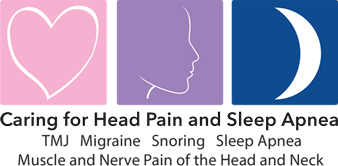
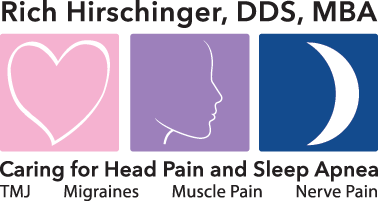
Diplomate American Board of Orofacial Pain
9615 Brighton Way, Suite 323
Beverly Hills, CA 90210
888.981.8981
Muscles that Refer Pain and/or Sound into the TMJ/Ear
Many people think they have "TMJ," which stands for temporomandibular joint. Somehow, TMJ has become a diagnosis when the truth of the matter is that it describes an anatomical part of the human body. It connects the jaw to the skull. The "T" in TMJ stands for the temporal bone, which is part of the skull. The "M" in TMJ stands for mandibular. The jaw is referred to as the mandible. The "J" in TMJ stands for joint. The jaw joint is a unique joint since it is the only joint in the body that requires both left and right joints to cause a movement, and it is the only joint in the body that involves two separate movements: a hinge movement and a translational movement. You can learn more about TMJ movements on the TMJ animation page. Having said that, most TMJ pain is due to muscle pain.
The site of the pain is in red, and the source of the pain is indicated by the black "X." The denser areas of red are not necessarily more painful than the less dense areas but they are the more common areas of referred pain.
Deep Masseter
The deep masseter is a jaw-closing muscle. It is on the outside of the jaw, but underneath the superficial masseter muscle.

Medial Pterygoid
The medial pterygoid is a jaw-closing muscle. The "p" in pterygoid is silent. This muscle is found on the inside of the jaw so the animation shows you the red areas, which is where patients report pain, and it shows a window cut into the jaw so you can see that the muscle is located on the inside of the mandible (jaw).
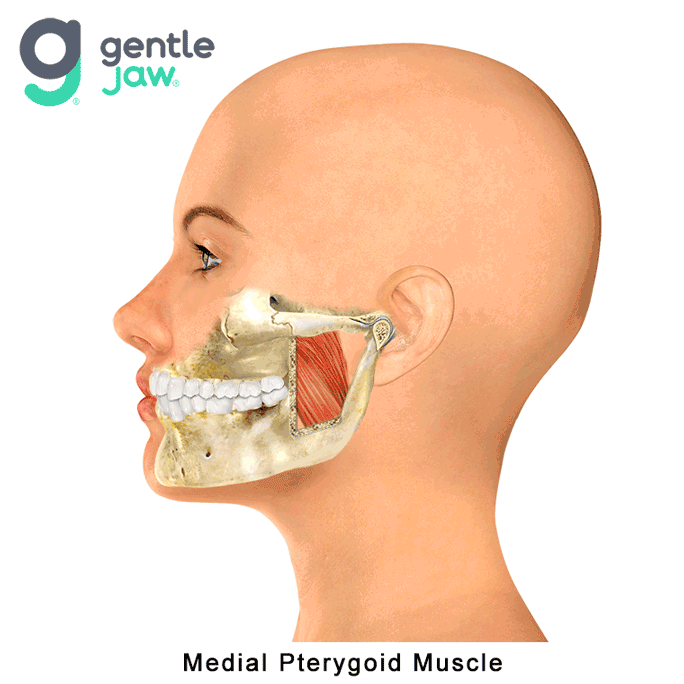
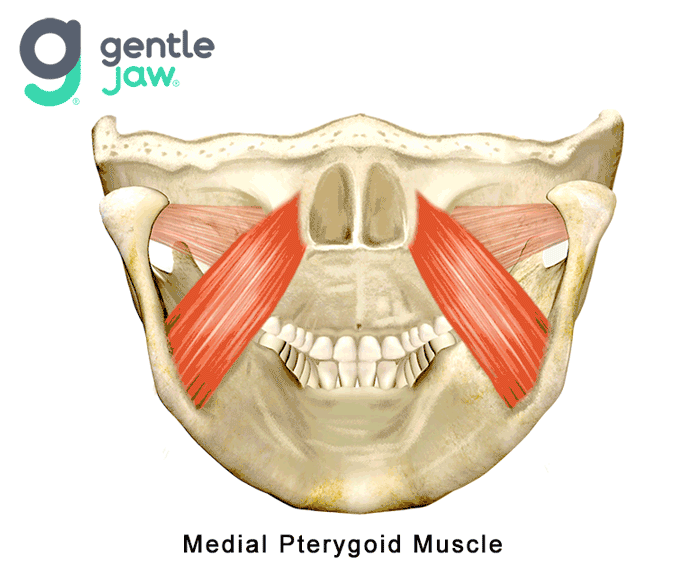
Lateral Pterygoid
The lateral pterygoid is a muscle that moves your jaw side-to-side and front and back. This is the muscle that gets very sore when people grind their teeth.

Clavicular Head of the Sternocleidomastoid
The clavicular head of the sternocleidomastoid muscle, which is abbreviated as SCM, is the muscle on the side of your neck that turns your head side to side. It can refer pain into the ear. This muscle can also refer pain behind the ear, to the forehead, and it can refer pain to the opposite forehead.
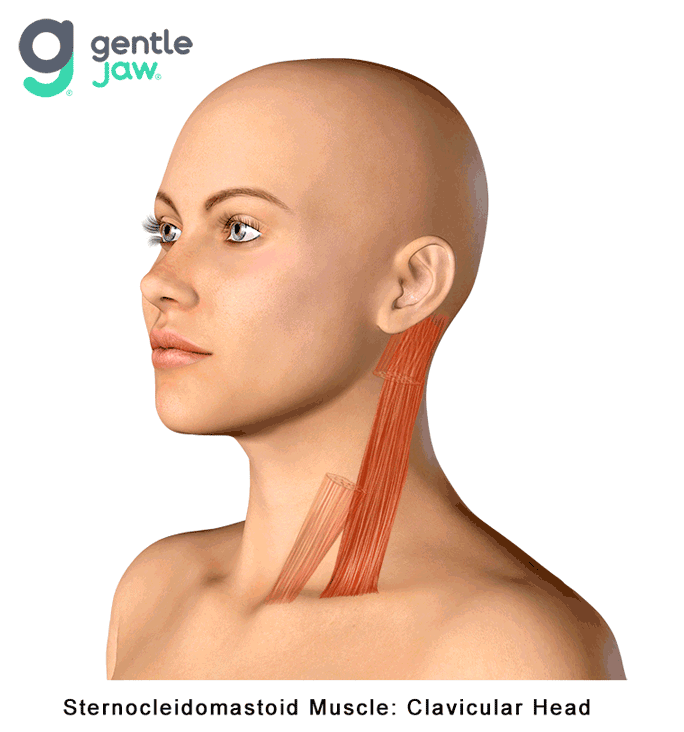
Sternal Head of the Sternocleidomastoid
The sternal head of the sternocleidomastoid muscle, which is abbreviated as SCM, is the more superficial muscle on the side of your neck that turns your head side to side. It can refer pain in front of the ear. This muscle can also refer pain behind the ear, to the forehead, to the cheek, to the chin, into the eye, under the jaw, and into the breastbone.
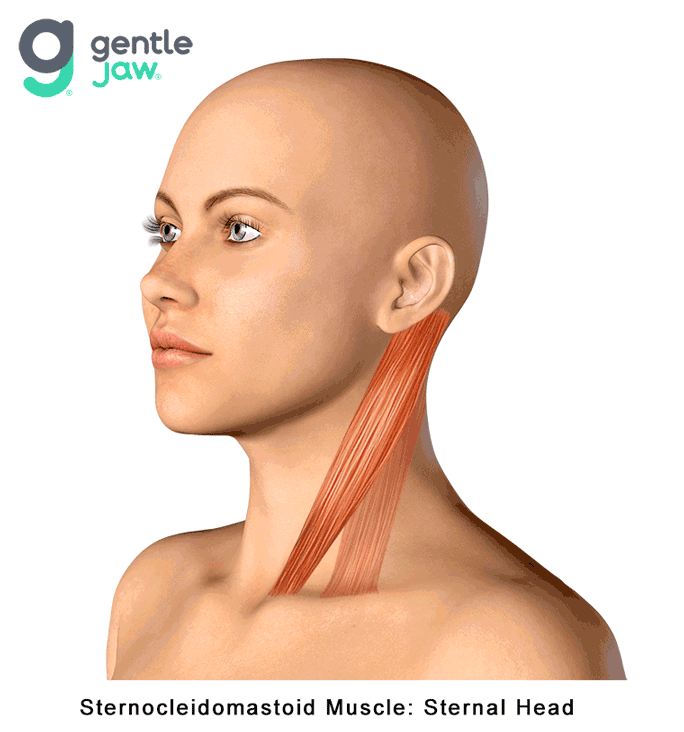
Learn about referred muscle pain into teeth.
Learn about appliances for TMJ.
Learn about Botox for TMJ and jaw muscle pain.
All images are copyright of gentle jaw company, Inc., and were created under the direction of Dr. Hirschinger. They may be used with permission by completing the form at this page on the gentle jaw website and they must not be edited. All rights reserved.






